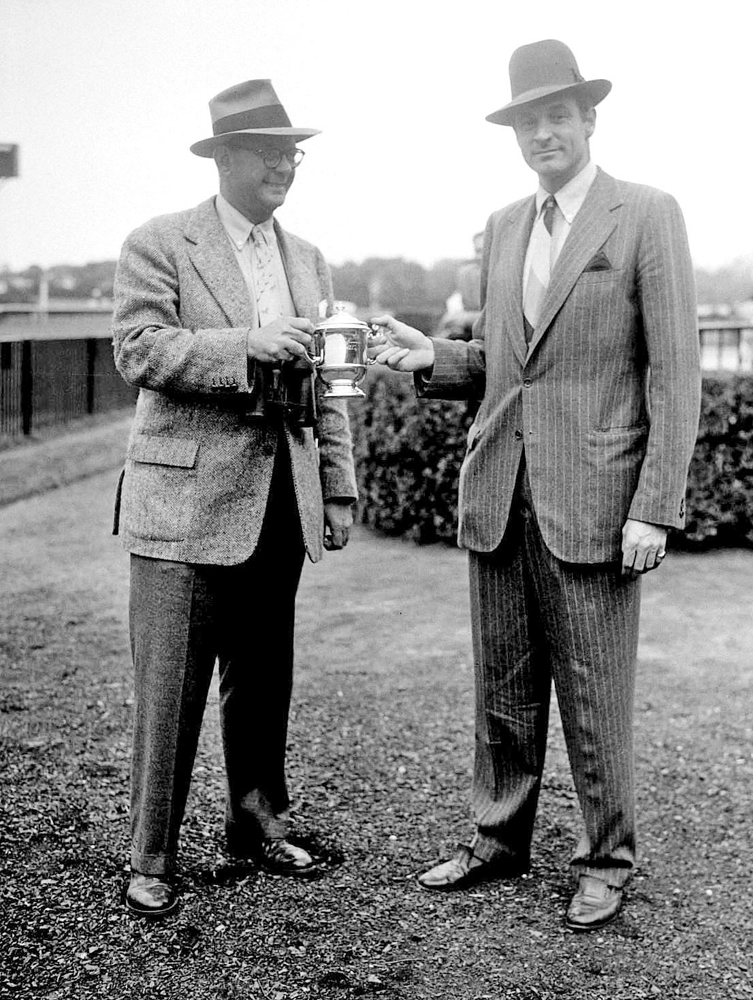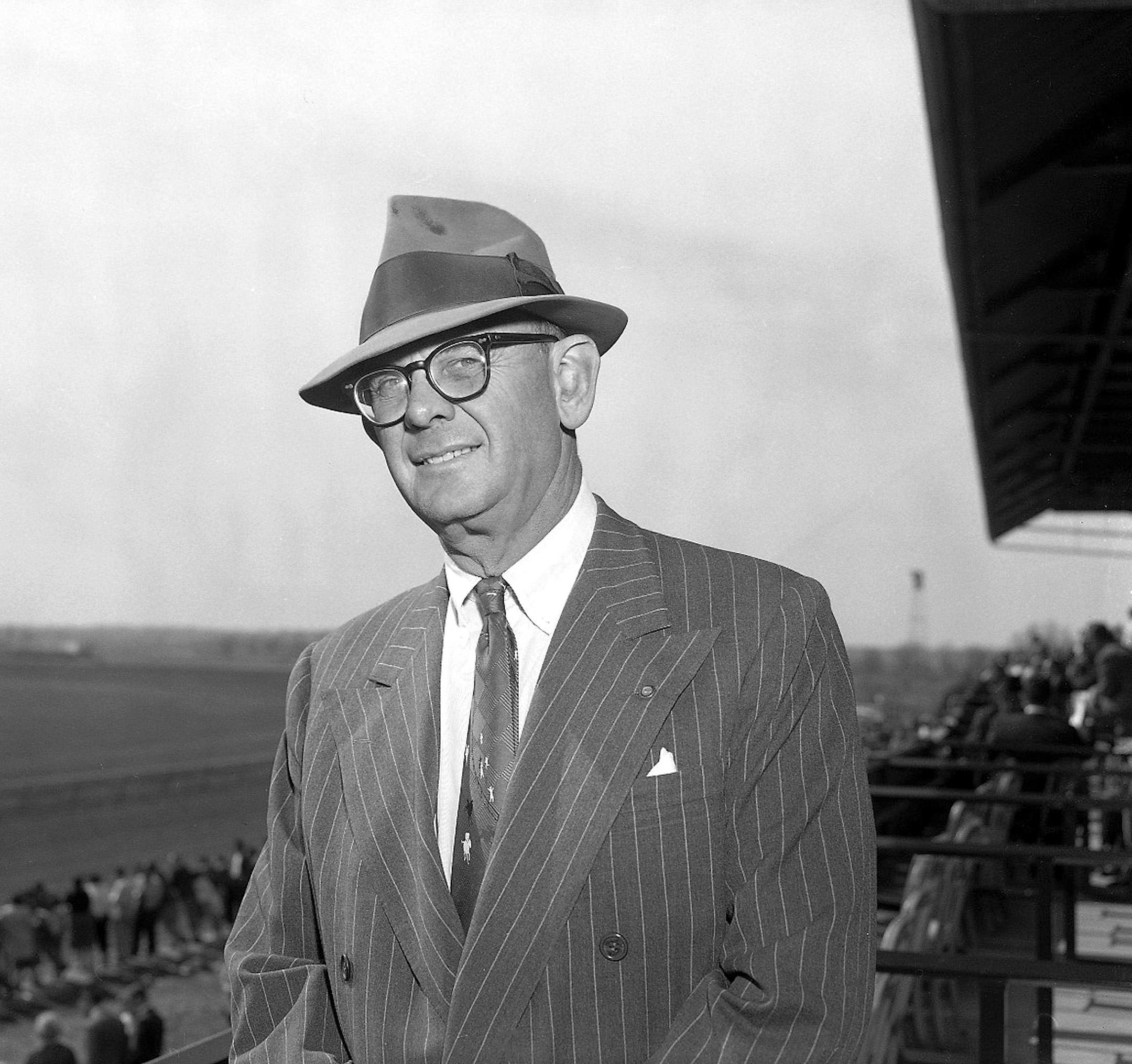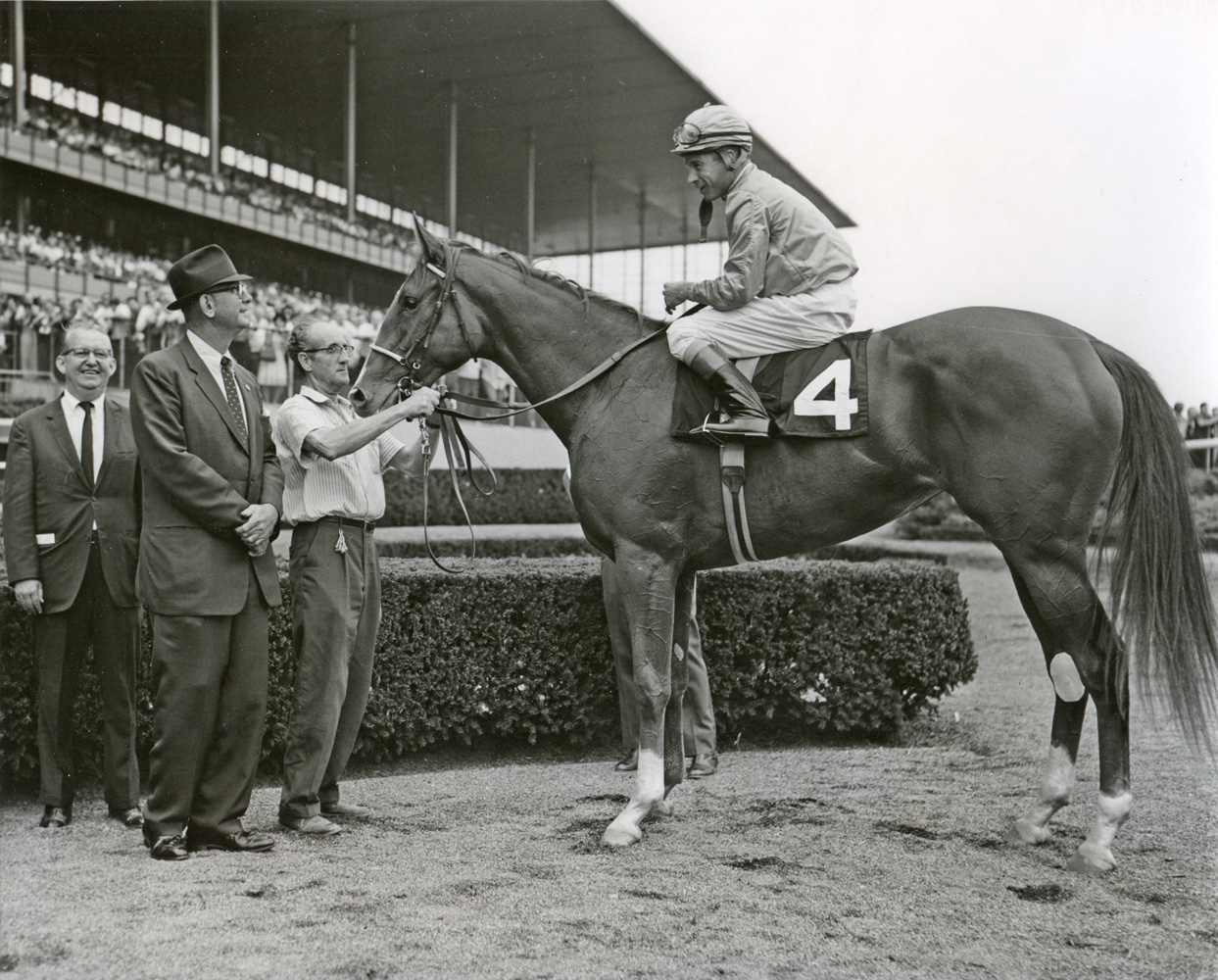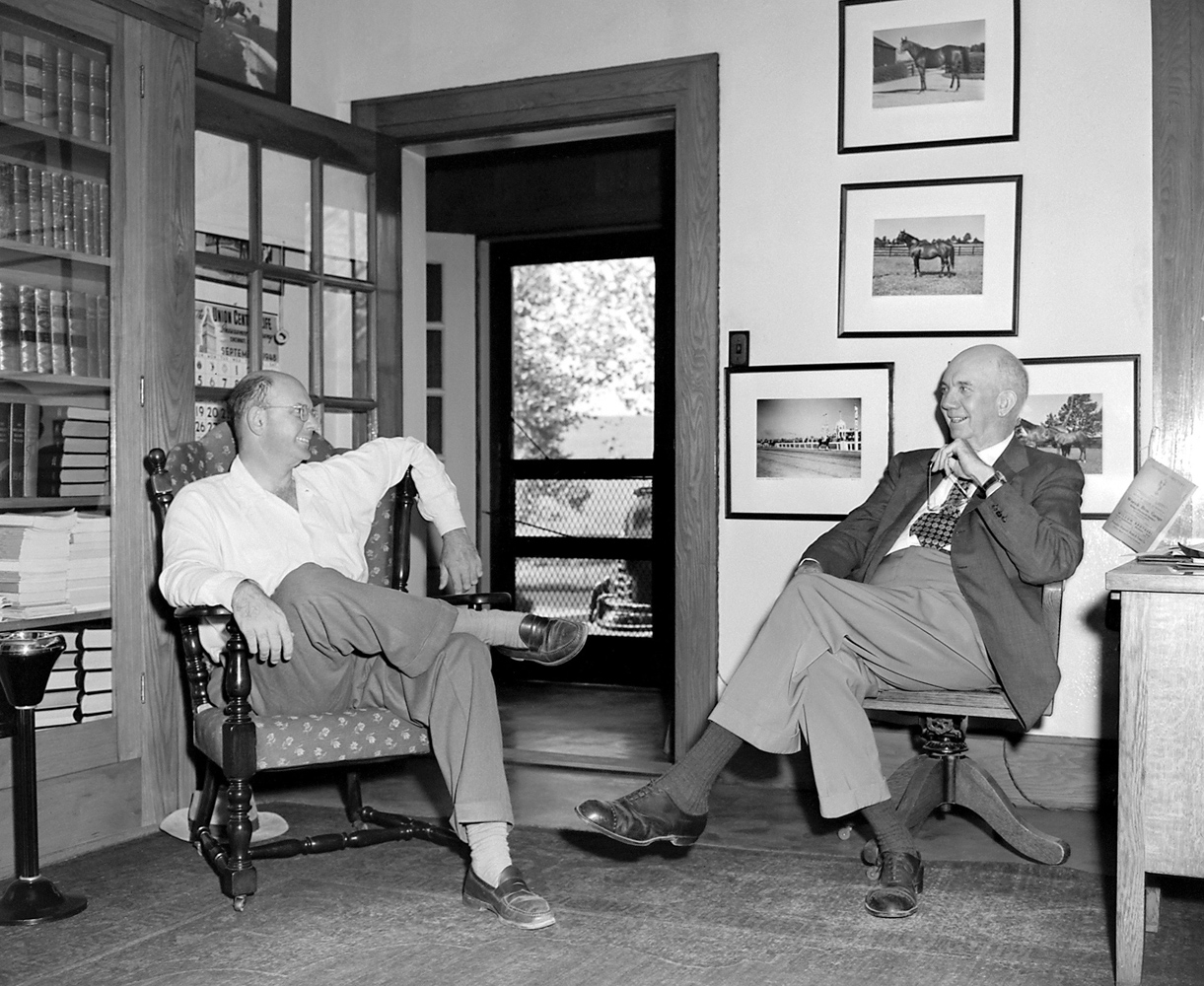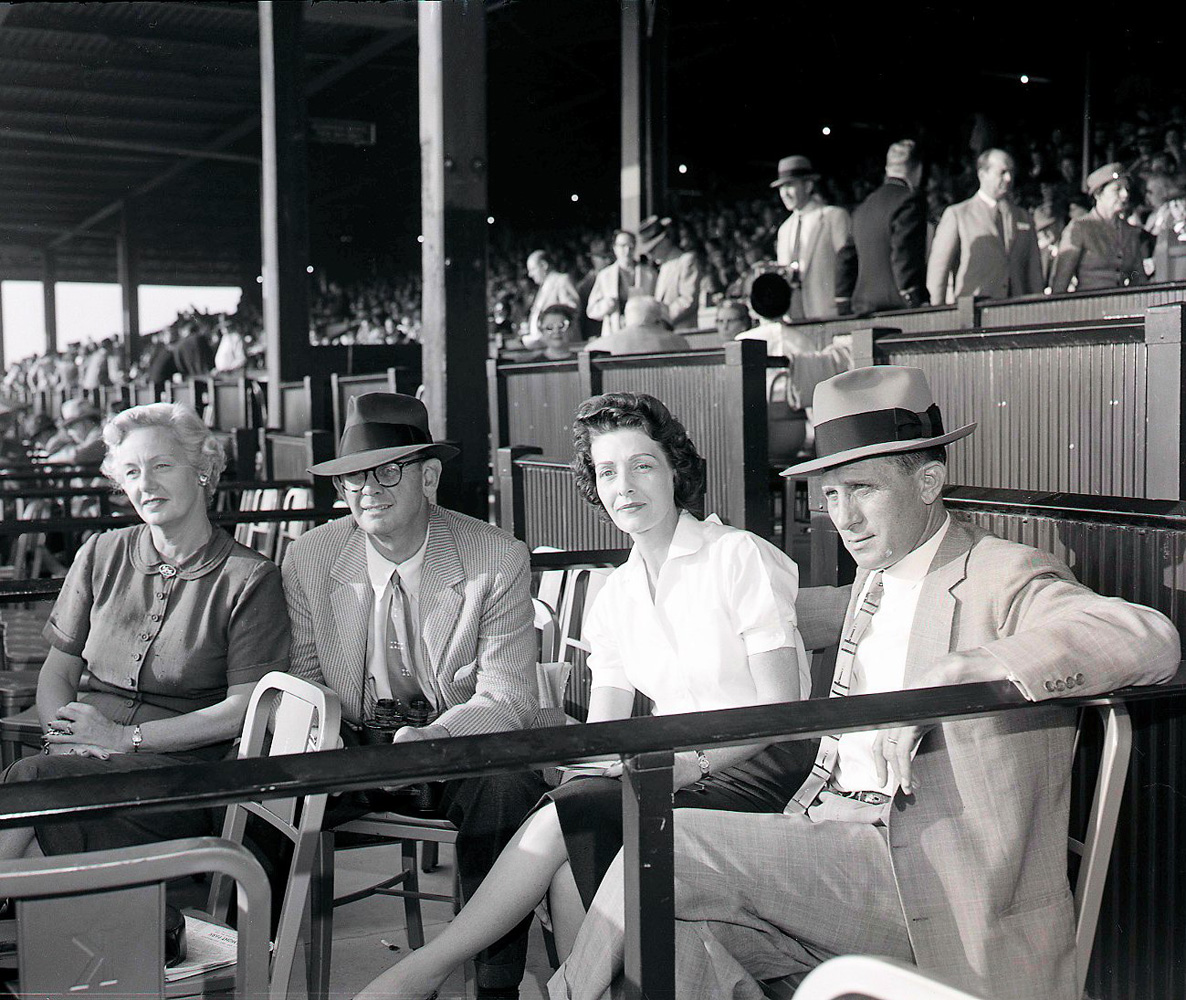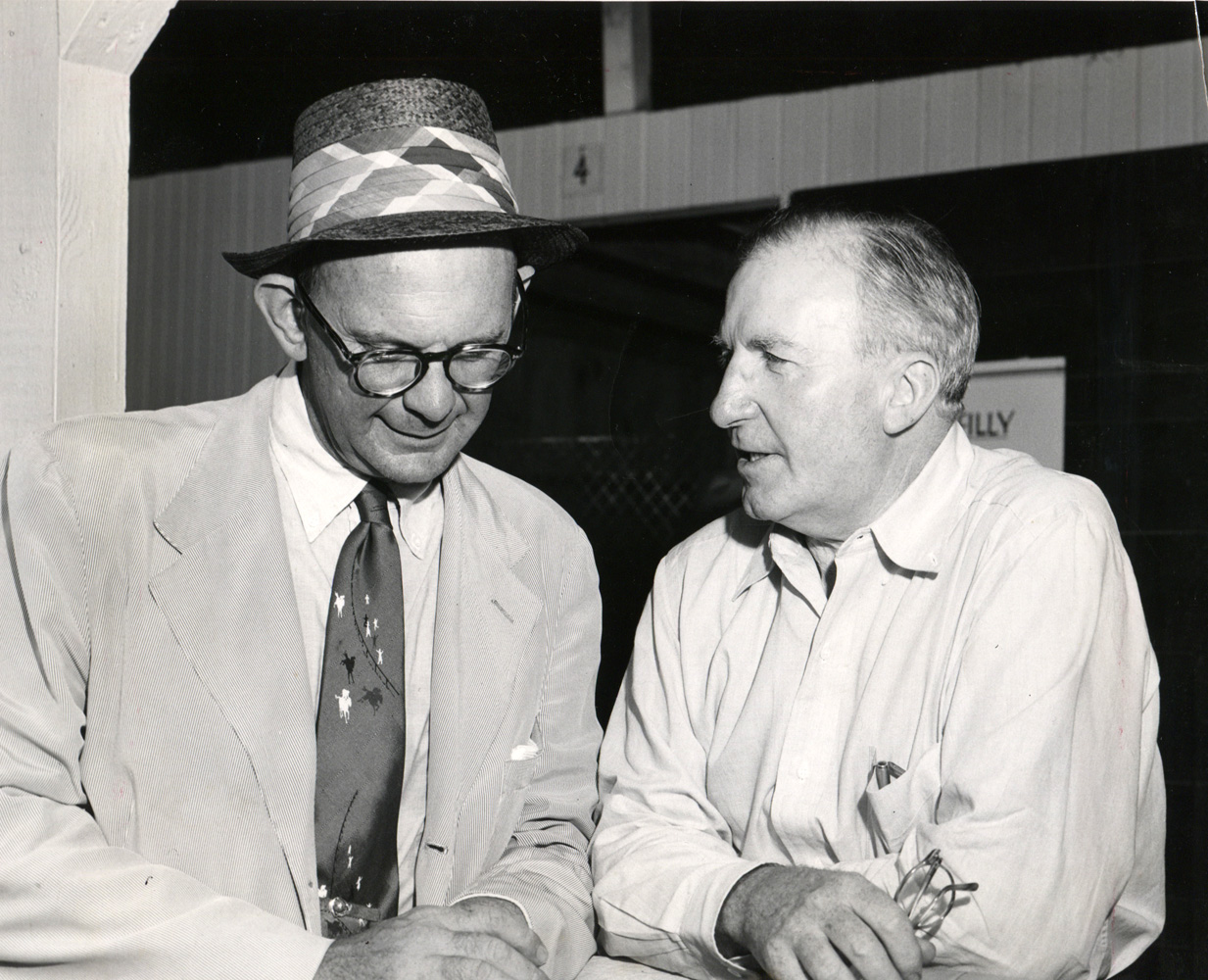Arthur B. "Bull" Hancock, Jr.
More than anything else, Arthur Boyd “Bull” Hancock, Jr. was identifiable as a working horseman, the first of his profession to be elected to The Jockey Club. One of the most astute and accomplished breeders in American racing history, Hancock was also a prominent and respected leader in the sport who built upon an already grand foundation to further develop and entrench historic Claiborne Farm as arguably the most important horse farm in the world.
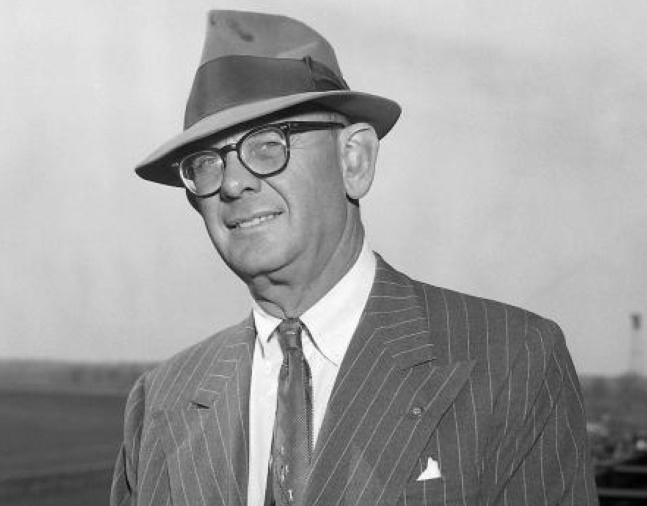
2016
Jan. 24, 1910, Bourbon County, Kentucky
Sept. 14, 1972, Nashville, Tennessee
Biography
More than anything else, Arthur Boyd “Bull” Hancock, Jr. was identifiable as a working horseman, the first of his profession to be elected to The Jockey Club. One of the most astute and accomplished breeders in American racing history, Hancock was also a prominent and respected leader in the sport who built upon an already grand foundation to further develop and entrench historic Claiborne Farm as arguably the most important horse farm in the world.
More than anything else, Arthur Boyd “Bull” Hancock, Jr. was identifiable as a working horseman, the first of his profession to be elected to The Jockey Club. One of the most astute and accomplished breeders in American racing history, Hancock was also a prominent and respected leader in the sport who built upon an already grand foundation to further develop and entrench historic Claiborne Farm as arguably the most important horse farm in the world.
Bull Hancock was born into a family of horsemen on Jan 24, 1910 at Marchmont Farm (which later became part of Claiborne) in Kentucky. His father and grandfather were both highly accomplished with thoroughbreds. Bull Hancock’s grandfather, Capt. Richard J. Hancock, began breeding racehorses in the 1870s and was involved in a successful partnership with Maj. Thomas W. Doswell of Virginia. Along with Maj. Doswell, Capt. Hancock co-owned 1884 Preakness Stakes winner Knight of Ellerslie.
Prior to his involvement in horse breeding, Capt. Hancock fought under the direction of Thomas “Stonewall” Jackson for the Confederacy during the Civil War. Capt. Hancock was wounded during a battle near Charlottesville, Virginia, and was aided in his recovery by a local family. Before the war ended, Capt. Hancock married Thomasia Overton Harris, a daughter of the family that cared for him when he was wounded. Through his new bride’s inheritance, Capt. Hancock later developed the farm at Ellerslie into one of the most important thoroughbred nurseries in Virginia.
Capt. Hancock’s son, Arthur B. Hancock, Sr., was born at Ellerslie in 1875 and took over the farm in 1909, three years before Capt. Hancock’s death. Hancock, Sr. married Nancy Tucker Clay of Paris, Kentucky, in 1908 and two years later she inherited 1,300 acres of prime land in Kentucky’s Bourbon County.
Named Claiborne, the thoroughbred operation started there in 1910 with the importation of the stallion Wrack for $8,000 through the British Bloodstock Agency. The farm grew to some 2,100 acres under the direction of Hancock, Sr. With the combination of Claiborne and Ellerslie, Hancock, Sr. became one of the most accomplished breeders in America. He topped all American breeders in races won nine times (1935, 1936, 1937, 1938, 1940, 1942, 1943, 1944, 1946) and in money earned five times (1935, 1936, 1937, 1939, 1943). Hancock, Sr. followed John E. Madden as America’s most prominent commercial breeder. Through Claiborne and Ellerslie, Hancock, Sr. bred 138 stakes winners, including nine champions.
Bull Hancock had big shoes to fill, which he proved quite capable of doing.
After graduating from Princeton University in 1933, Bull Hancock returned to Claiborne as an assistant to his father. Following service in the Army Air Corps from 1941 through 1945, Bull Hancock took over direction of Claiborne Farm when his father suffered the first of a series of heart attacks. When his father suffered a stroke in 1947, Bull Hancock assumed complete management of the farm.
Bull Hancock furthered the previous success of the farm. Beginning in 1955, a Claiborne stallion topped the American general sire list for 15 consecutive years: Nasrullah led for five years, Princequillo for two, Ambiorix once, then Bold Ruler (a son of Nasrullah) for seven consecutive years. Bull Hancock also acquired for stud other internationally influential horses such as Nijinsky II, Ambiorix, Damascus, Sir Ivor, Tom Rolfe, and Forli. In 1972, the year Bull Hancock died at the age of 62, Claiborne’s Round Table reinstated the farm as home of America’s leading sire. During his time at the helm of Claiborne, Bull Hancock also expanded the farm from about 2,100 acres to approximately 6,000.
For 20 consecutive years, beginning in 1952, Claiborne was able to claim at least one champion thoroughbred that was raised on the farm. Five times during that span, four or more of the yearly champions were raised at Claiborne, including 1957 when six horses previously foaled at Claiborne were recognized as champions: 2-year-old colt Nadir, 3-year-old colt Bold Ruler, 3-year-old filly Bayou, handicapper Dedicate, grass horse Round Table, and steeplechaser Neji.
An incredible 32 champions were foaled and raised at Claiborne for outside clients during the Bull Hancock era. They included Hall of Fame members Kelso, Buckpasser, Nashua, Forego, Bold Ruler, Round Table, Gamely, Neji, Riva Ridge, and Cicada. Other notable champions bred at Claiborne during this time included Dedicate, Numbered Account, Bald Eagle, Ridan, Hoist the Flag, and First Landing, among others. Bull Hancock also bred four European champions while at Claiborne, including Nureyev and l’Arc de Triomphe winner Ivanjica. Claiborne was America’s top breeder in earnings in 1958, 1959, 1968, and 1969 under Hancock’s direction.
Bull Hancock also bred and campaigned the champions Moccasin, Nadir, Doubledogdare, and Bayou. He had a long-standing partnership arrangement with William Haggin Perry, whereby half of each Claiborne foal crop raced in Perry’s silks and half in Claiborne’s.
Overall, Bull Hancock bred 112 stakes winners in the Claiborne name, while also serving as an adviser to several prominent outside clients, including the Phipps family and William Woodward, Sr. In 1955, Bull Hancock had the distinction of being the first working horseman to be elected to The Jockey Club. He was also president of the American Thoroughbred Breeders Association and vice president of the American Thoroughbred Owners Association. Bull Hancock was a key figure in the merger of those two organizations in 1961 into the Thoroughbred Owners and Breeders Association (TOBA).
In addition, Bull Hancock was a director and trustee at Keeneland and a director of Churchill Downs, where he was one of the dozen who purchased controlling interest in the track to avoid a conglomerate takeover. He also was a member of the Kentucky Racing Commission, a director of the Grayson Foundation and a founding member and director of the Thoroughbred Breeders of Kentucky, in which role he played a part in establishing the American Horse Council.
Upon Bull Hancock’s death in 1972, The Blood-Horse’s Kent Hollingsworth wrote: “He was a fierce competitor, in racing, at the card table, shooting doves, or playing golf. … Most of all, Bull Hancock was a working horseman, the most successful of his time. He ran the biggest thoroughbred operation in the world, and he ran it well. He had learned it from the bottom up, and he knew it from the top down. He could recognize any mare at Claiborne on sight, knew what she had been bred to, knew what she was worth, He could recognize a stallion prospect in Argentina, or Australia, or France, or in his own yearling paddock, and he could put together a multi-million-dollar syndicate with one swing through the Saratoga box section.”
Achievements
North America's leading breeder in earnings — 1958, 1959, 1968, 1969
Bred 112 stakes winners, including four champions
Media
